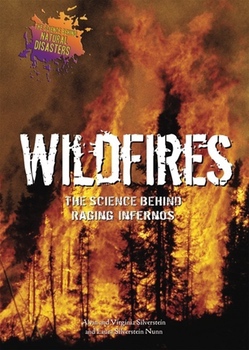
Wildfires
Throughout history, fire has been a source of both fascination and great fear. Young readers will want to know what turns small fires into huge infernos and what firefighting techniques are used to try to contain them. Why are wildfires more common in some areas than others? This book explores how wildfires form, what causes them to break out of containment efforts, and how scientists study them.
* Reviews *
Five or six short chapters in these matter-of-fact books outline the essential facts of each phenomenon in clear language. The titles open with an account of a famous eventfor example, Earthquakes re-creates the scene inside San Francisco's Candlestick Park and farther afield when the Loma Prieta quake struck during the 1989 World Series. The texts go on to cover the science, to describe in general terms what happens during an event, and to offer safety advice. These latter sections discuss both personal safety and what scientists are doing to predict these phenomena. Scientific explanations are accompanied by plentiful color diagrams that will help students to grasp causes and effects. Sidebars on most spreads feature "It's a Fact" statistics and other data, and question-and-answer boxes covering such puzzles as why Tornado Alley is so afflicted. There is some overlap in topics among the bookstsunamis are relevant in Earthquakes and Volcanoes, for example, but the coverage of them is not the same. Photos of disasters are necessarily dated and therefore grainy at times, but they are effective, and are sometimes turned into helpful, lively diagrams by the addition of such features as wind-direction arrows., School Library Journal Fall 2009










